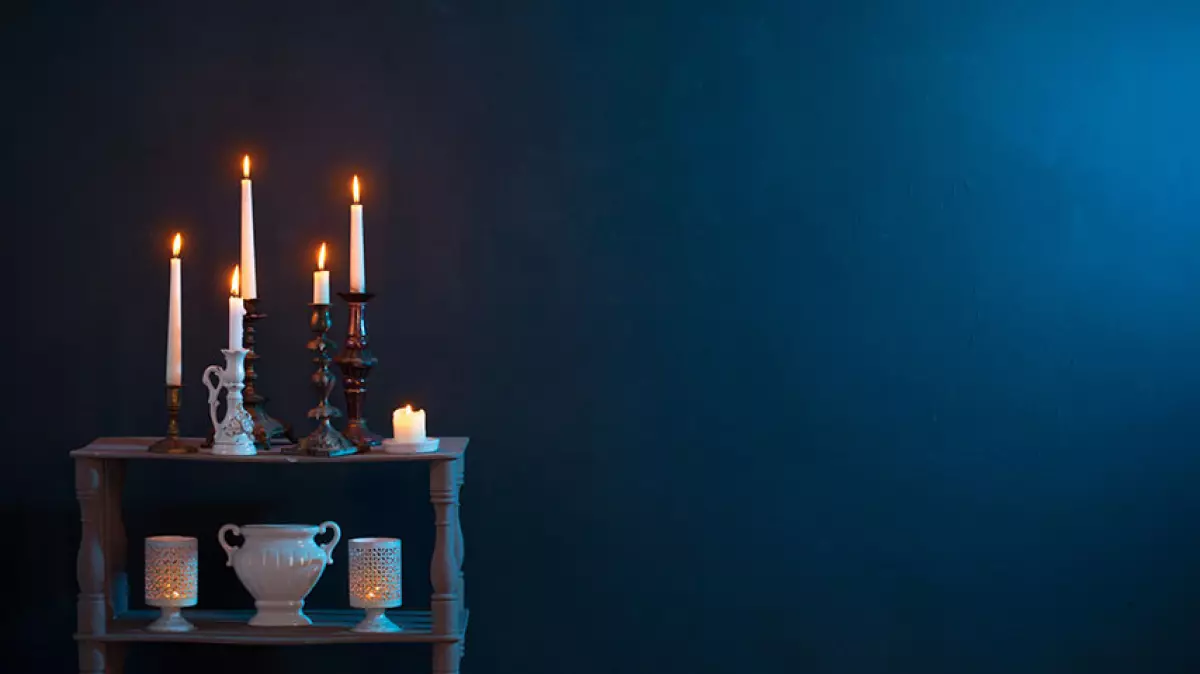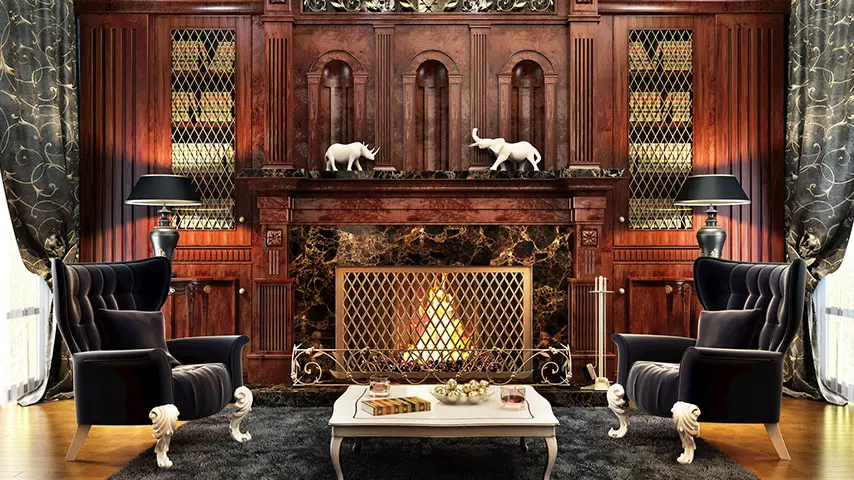A modern Gothic interior should embody the timeless class and elegance of the High Middle Ages. It's an era where architectural design transcended functionality, creating awe-inspiring structures that continue to inspire us today. The Canterbury Cathedral and the Abbey Church of Saint-Denis are prime examples of Gothic character, with their intricate spires and arched interiors serving as seminal works for later Renaissance buildings. Even today, Gothic influences can be seen in minor cathedrals all around the world.
Contrary to popular belief, designing a Gothic interior in 2020 is not about replicating Dracula's castle with bare brick walls and stained windows. The style has evolved to balance regality and accessibility, incorporating elements that evoke drama, function, and excitement. While Gothic churches and castles were prevalent in the past, there were very few Gothic mansions and houses. However, with careful planning and attention to detail, a modern Gothic interior can be breathtakingly beautiful.
If you're unsure where to start, here are eight ways to achieve a Gothic interior design that exudes class and charm.
1. Seek Inspiration
Drawing inspiration from various sources is crucial when designing your Gothic interior. Just like designing houses in video games such as The Sims, you can find design ideas online and modify them to fit your preferences. Gothic structures can still be found in the United Kingdom, Paris, Prague, and Spain. By studying Gothic buildings and their themes, you can conceptualize a design that suits your vision.
For example, the Notre Dame cathedral features a large circular stained glass window as its centerpiece. You can emulate this look by installing arched windows in your living and dining room, allowing natural light to flood your home.
2. Consider Victorian Style
One popular trend in Gothic architecture today is Victorian-style interiors. Victorian interiors diverge from the imposing pillars and dimmed windows of the Early Gothic era, featuring bright, intricate rooms. With large fireplaces, wooden beams, and intricately designed windows adorned with blooming flowers and trefoils, Victorian interiors provide a somber and regal ambiance without the gloominess commonly associated with Gothic designs.
3. Embrace Gothic-Style Furniture
Gothic furniture showcases the remnants of an old church, characterized by heavy dark woods that exude sturdiness and decadence. Cabinets, headboards, and chairs feature ornate designs, reminiscent of the grandeur found in cathedrals. The elegant spires and arches on these pieces make them feel right at home in a Gothic interior.
 Image: Gothic furniture and appliances
Image: Gothic furniture and appliances
4. Choose Rich Paint Colors
Gothic paint colors are dark and rich, such as black, ruby, gold, and purple, evoking a sense of boldness and extravagance. To avoid starkness, modern Gothic designs often incorporate heraldic symbols and stenciled patterns on the walls. Coating the walls with these flat colors and coordinating them with tapestries and detailed fabrics creates an immersive and exclusive atmosphere. Stained glass windows are often adorned with wrought iron bars, adding to the hidden beauty and allure.
5. Add Dramatic Flair
Gothic architecture is known for its opulence and maximalism. To capture the same ardor and drama, consider using wallpapers to achieve stenciled patterns on the walls. Opt for an elegant wallpaper with detailed graphics in a rich, dark hue. This will lend an air of regality and flow to your room. Balance the use of dark colors like blue, burgundy, dark forest green, and ruby red to avoid creating a dungeon-like atmosphere.
 Image: Gothic wallpaper pattern
Image: Gothic wallpaper pattern
6. Choose Timeless Fabrics
Plants, portraits, and fabrics adorned the walls and floors of old Gothic interiors. If Renaissance-age paintings are out of reach, you can still create a captivating space by carefully selecting fabric colors and patterns for rugs, chairs, and throw pillows. Look for formal yet expressive designs that convey a sense of grandeur and timelessness.
Velvet, satin, and silk fabrics in bold and dramatic colors work wonders for carpets, couches, and chairs. Velvet curtains, satin pillows, and luxurious beddings are staples in Gothic houses. Aim for a "fit for a king or queen" vibe when choosing your furniture and fabrics.
7. Pay Attention to Accessories
Accessories are the finishing touches that bring your Gothic interior to life. By using seemingly insignificant details, you can transform a gloomy Gothic room into a space fit for royalty. Gothic accessories should exude excess and glamour, reminiscent of the opulence enjoyed by the highborn during the Middle Ages.
Use large chandeliers as centerpieces, allowing them to droop down into the room. Gothic interiors have high ceilings that demand ample lighting and decor. Incorporate dark wood, wrought iron, stone, and metal elements. For end tables, opt for ornate porcelain and bronze pottery to avoid leaving corners feeling barren. Accent your richly-colored walls with porcelain or wrought iron sconces and lamps. If your budget allows, complete the look with a painting or two depicting religious themes or sceneries.
8. Set the Tone
Every interior design has a visual tone that strikes a chord with people. Traditionally, Gothic themes are dark, self-serious, and dreary. However, modern Gothic designs have adapted to work with neutral and bright colors in well-lit elegant spaces, such as receiving areas, kitchens, and living rooms.
Incorporate forest green wallpaper in the kitchen and dining rooms to create a subtle ambiance conducive to life. Use burgundy and deep red in your den and library to evoke relaxation and openness. Contrast black paint with fluorescent sconces and other lighting fixtures to give your Gothic interior design a contemporary touch.
In conclusion, combining the Gothic style with influences from other eras will prevent your interiors from appearing drab and bleak. Follow these eight recommendations to create a uniquely captivating Gothic or Victorian interior. Remember, your Gothic design should be a reflection of your tastes and needs, and with the right approach, you can turn your home into a stunning Gothic sanctuary.









